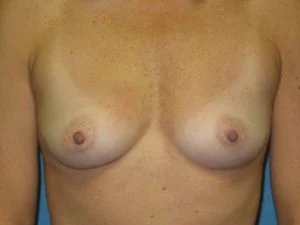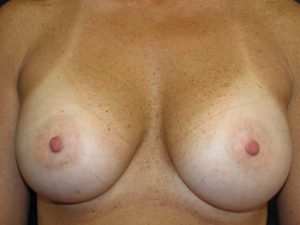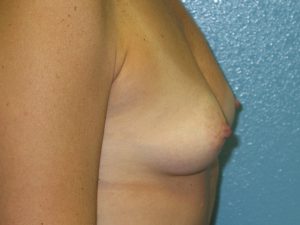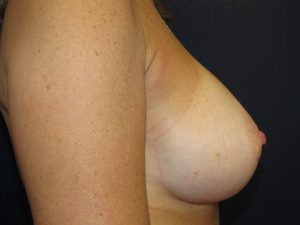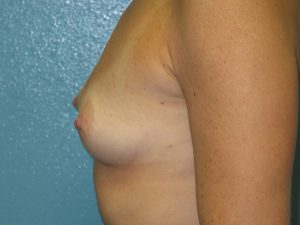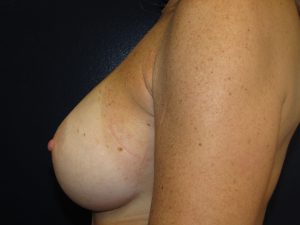Home|Blog | Breast Augmentation with Saline Breast Implants CAN Yield Excellent Results: A Ten Year Patient Follow-up
Breast Augmentation with Saline Breast Implants CAN Yield Excellent Results: A Ten Year Patient Follow-up
Silicone breast implants are used in the majority of breast augmentations that are now being performed. In fact, in 2012 they constituted 72% of the total number of breast implants used for breast enlargement with the remaining 28% being saline. In my practice, due to my firm evidence based convictions on the superiority of silicone implants over the saline ones, nearly 99% of my patients choose the silicone ones.
This preponderance of silicone implants being placed in breast enlargements was “artificially” eliminated between 1992 and 2006 due to the federal government’s (FDA) restriction on their usage. As a result, during this period, women electing to have this surgery either had to accept the usage of saline implants for their breast augmentations or forgo the surgery. (There were some exceptions to this edict.) In the last year of the moratorium which was 2006, 81% of the implants used were saline ones.
As you might expect, virtually all women decided that a breast enlargement with saline breast implants was better than having no surgery at all. Clearly, the benefits from undergoing this surgery – such as more aesthetically pleasing and alluring breasts and appearance, improvements in self-esteem, confidence, in relationships with others and in one’s sex life – far outweighed the downsides associated with saline implants.
Why are silicone breast implants so popular and chosen by the majority of women?
The reason is that they simulate quite well the feel and consistency of the female breast. They are the gold standard of breast implants. Cosmetically, they are light years superior to the saline ones which many people characterize as feeling like water balloons. Additionally, you can actually feel the envelope of the saline implant which often presents firm, discrete edges – not a natural occurrence in the female breast and a not so subtle reminder of their presence. Particularly in thin skinned individuals and those with their implants placed above the muscle, these edges can often be felt and seen as ripples of the overlying skin.
Despite all of this, many women who have saline implants are extremely happy with their results which they consider to be very good. The following patient of mine with a 10 year follow-up is but one example:
At the age of 37, this patient decided to pursue a breast enlargement which she had been thinking about for a long period of time (Fig A, C and E). Because of the restriction on the usage of silicone breast implants for primary breast augmentations, she underwent the procedure with saline implants that were placed behind the muscle. That was 10 years ago. She has been very happy with her results and has had no problems including rippling, hardness (capsular contracture) or contour irregularities (Fig B, D and F).
My examination revealed that her breasts were soft, the implants naturally mobile and that there was no rippling present. She did develop some laxity of the skin over time from gravity and age. The implants themselves could barely be felt.
This patient, like many others who have had breast augmentation with saline implants, demonstrates that despite the superiority of silicone breast implants, saline ones can still provide excellent aesthetic results.
If you would like additional information on breast augmentation surgery, on silicone or saline breast implants or on any other plastic surgery procedure that I perform, please feel free to contact my office at 480-451-3000.
Steven H. Turkeltaub, M.D. P.C.
Scottsdale and Phoenix, Arizona

